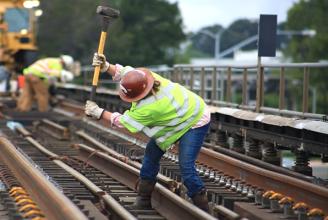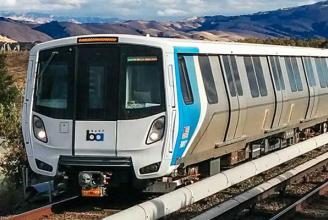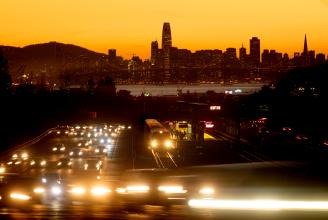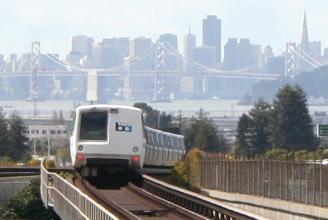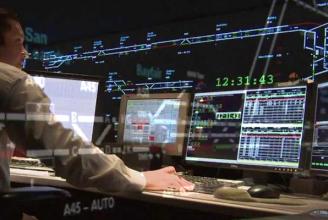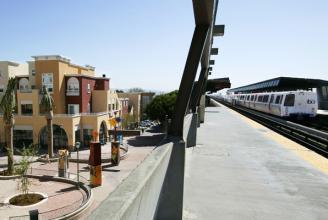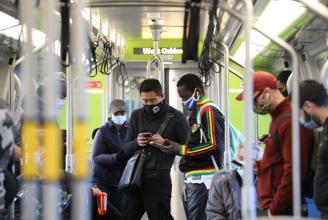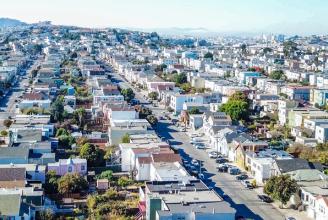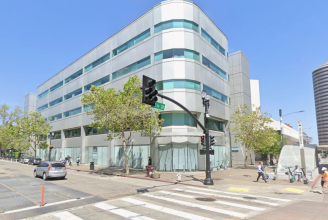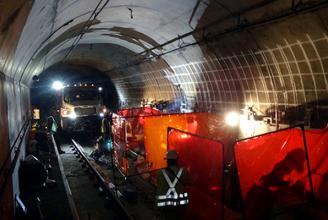The San Francisco Bay Area will include over two million new residents by 2040, for a total population of over nine million people. As the Bay Area grows, so will the need for BART. Below are some key projects in the works that will help make BART better, safer, and more useful for Bay Area residents for years to come.
Projects
We’re rebuilding and reinvesting throughout the BART system. Measure RR bond-funded projects include replacing worn rails, retrofitting the Transbay Tube, replacing escalators, and updating waterproofing in tunnels and structures.
Learn more about System Rebuilding
BART has begun to roll out new fare gates systemwide. BART has also made infrastructure changes within our stations to prevent fare evasion, such as installing higher barriers and bringing elevators into the paid area.
Learn more about New Fare Gates and Station Hardening
BART has retired its legacy fleet and is bringing on its next generation of train cars that are more comfortable, more reliable, and designed to serve the Bay Area for the next 30 years and beyond.
Learn more about New BART Train Cars
BART officially retired its fleet of original train cars at a retirement ceremony and final ride in April 2024. The legacy fleet served the Bay Area for more than 50 years.
The decommissioning process is complex, and a handful of cars have been or will be delivered to individuals and organizations who submitted proposals for repurposing the cars for a variety of purposes.
Learn more about Legacy Fleet Decommissioning
BART and the Capitol Corridor Joint Powers Authority have partnered to advance the Link21 program of system improvements that will transform the 21-county Northern California megaregion’s passenger rail network into a faster, more integrated system, providing a safe, efficient, equitable, and affordable means of travel for all types of trips. Link21 will include a new transbay rail crossing between Oakland and San Francisco that will increase BART’s transbay capacity and connect regional rail service across the Bay.
Learn more about New Transbay Rail Crossing (Link21)
BART is moving forward to implement the Transbay Corridor Core Capacity Project, which will increase peak hour capacity into San Francisco by 40%.
Learn more about Transbay Capacity Relief
Modernizing BART's train control system will allow trains to operate more frequently. A train control system operates rail vehicles and supervises scheduling and routing while preventing collisions. Modernizing BART’s 50+ year old train control is an important component in addressing critical capacity, reliability, and safety needs as we make way for the Fleet of the Future.
Learn more about Train Control Modernization
To accommodate the much larger (a hoped for goal of 1,081 train cars) and more technologically advanced Fleet of the Future, BART will need to build a state of the art maintenance and storage facility. The proposed Hayward Maintenance Complex Project would be just that. By improving underdeveloped BART property on-site, and acquiring adjacent commercial property, the new complex will be large enough to service up to 250 vehicles.
Learn more about Hayward Maintenance Complex
The Santa Clara Valley Transportation Authority (VTA) is managing a project to extend BART to Silicon Valley. The 16-mile extension will provide a fast, reliable, and convenient alternative to driving in two of the most congested highway corridors in the Bay Area.
Learn more about Silicon Valley Extension
BART’s TOD program aims to help create great communities near stations through development of BART property and partnerships with cities. BART’s goal is to build 20,000 homes and 4.5 million square feet of commercial space on 250 acres of BART-owned property. To help address the Bay Area’s housing crisis, 7,000 of these homes will be affordable.
Learn more about Transit-Oriented Development (TOD)
BART is working to improve cell phone connectivity across the system and provide seamless wifi coverage in all stations and aboard trains. The project will construct new wifi and Bluetooth infrastructure and enhance cellular coverage to drastically reduce dropped calls, provide reliable connectivity for video and audio streaming while riding and waiting, and allow for improved app functionality, even in underground stations. Read more about the project.
Learn more about BART Wireless Technology
The San Francisco Bay Area is expected to welcome 2 million more residents and 1 million more jobs by 2050, as estimated by the Metropolitan Transportation Commission’s Plan Bay Area 2050. As the Bay Area grows, so will the need for BART. Planning will help make BART better, safer, and more useful for Bay Area residents and workers for years to come.
Learn more about Planning
Visit the BART Police Department Headquarters (BPD HQ) webpage for updates.
Learn more about BART Police Department Headquarters (BPD HQ)
In 2024, BART's falconry-based nuisance bird control initiative expanded to 13 stations following a successful pilot at El Cerrito del Norte. The program uses highly trained hawks to humanely mitigate pigeon problems at stations.
Learn more about Falconry-Based Nuisance Bird Control Program
BART initiated an Earthquake Safety Program to improve vulnerable portions of the original BART system—making it safer for the public and BART employees. The program was completed in 2024.
Learn more about Earthquake Safety Program - Completed 2024
